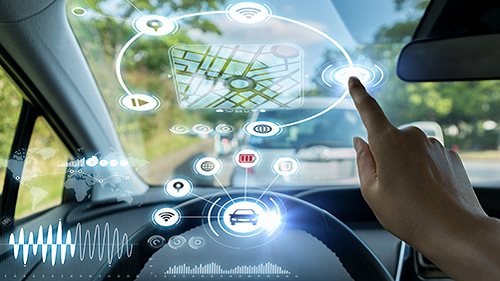5G claiming success in connected and autonomous vehicle testing
Vodafone has joined Midlands Future Mobility in the UK, giving a boost to the country’s real-world connect and autonomous mobility (CAM) testbed.
As telecoms website 5g.co.uk explains: “In all, thanks to Vodafone along with the Wireless Infrastructure Group, 80% of the Midlands Future Mobility urban route will be connected to 5G, which the network claims will make the West Midlands one of the best-connected environments in the country.”
Chris Lane, head of transport innovation, transport for West Midlands (TFWM) explains that Midlands Mobility Future is a public-private consortium, which can its partners – including Vodafone. For example, partners such as engineering company Costain can use the testbed to comprehend infrastructure products. The company can then take what it’s learnt and apply the lessons to other similar projects and other infrastructure products.
Another engineering services partner, AVL, is working with vehicle manufacturers, according to Lane, to explore how they can develop new product design. He adds: “Horiba Mira are one of the partners and their understanding is about what 5G means for them on the test track and how this translates into the real world.”
Real-world mobility
Lane believes it is vital to bring 5G to real-world connected and autonomous vehicle (CAV) mobility testing: “I think the key thing is that we see 5G as a mobile technology of the future, that will be in the majority of people’s hands at some point. So, we need to make best advantage of technology and it provides us with some new opportunities that 4G wouldn’t have given you. For example, at a busy junction such as the M42 at Birmingham Airport, 4G would have struggled to send connected vehicle messages.
“That section of motorway is currently a managed motorway with messages being delivered by infrastructure such as on the gantry, with 5G you will have the option of in-vehicle messaging. The intention is for this to be built into the car, on your dashboard, but this is dependent on manufacturers building it into the vehicle. Autonomous vehicles are a little way off but motorways could be one of the first places you will see them and 5G allows us to talk to the car in a very reliable way.”
He predicts that the local traffic authorities could, with 5G, make some savings. However, he says many local authorities are struggling to meet their highways budgets. With 5G they can do things differently by providing digital services that can include messages being sent straight to each vehicle. The savings are created by reducing the need to build and maintain physical infrastructure.
To read the complete article, visit TU-Automotive.

















